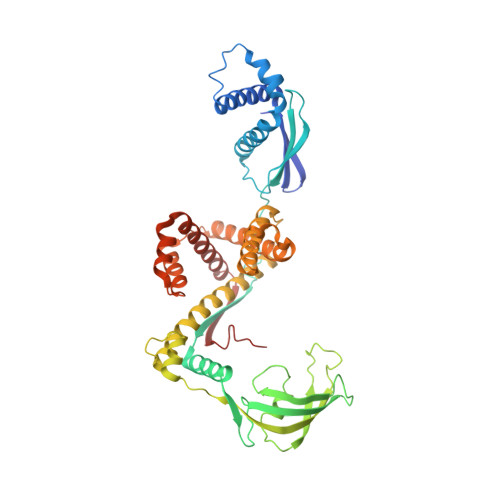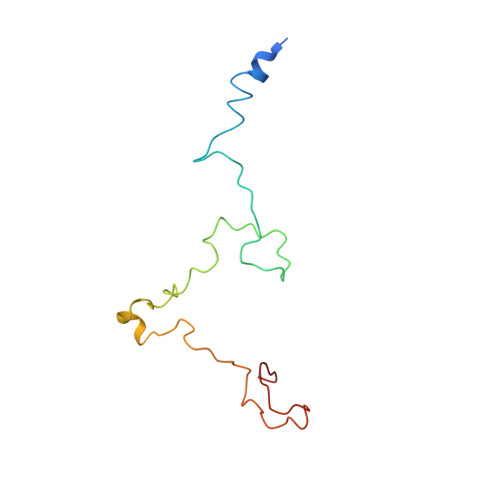Structural basis for protein antiaggregation activity of the trigger factor chaperone.
Saio, T., Guan, X., Rossi, P., Economou, A., Kalodimos, C.G.(2014) Science 344: 1250494-1250494
- PubMed: 24812405
- DOI: https://doi.org/10.1126/science.1250494
- Primary Citation of Related Structures:
2MLX, 2MLY, 2MLZ - PubMed Abstract:
Molecular chaperones prevent aggregation and misfolding of proteins, but scarcity of structural data has impeded an understanding of the recognition and antiaggregation mechanisms. We report the solution structure, dynamics, and energetics of three trigger factor (TF) chaperone molecules in complex with alkaline phosphatase (PhoA) captured in the unfolded state. Our data show that TF uses multiple sites to bind to several regions of the PhoA substrate protein primarily through hydrophobic contacts. Nuclear magnetic resonance (NMR) relaxation experiments show that TF interacts with PhoA in a highly dynamic fashion, but as the number and length of the PhoA regions engaged by TF increase, a more stable complex gradually emerges. Multivalent binding keeps the substrate protein in an extended, unfolded conformation. The results show how molecular chaperones recognize unfolded polypeptides and, by acting as unfoldases and holdases, prevent the aggregation and premature (mis)folding of unfolded proteins.
Organizational Affiliation:
Center for Integrative Proteomics Research and Department of Chemistry and Chemical Biology, Rutgers University, Piscataway, NJ 08854, USA.















